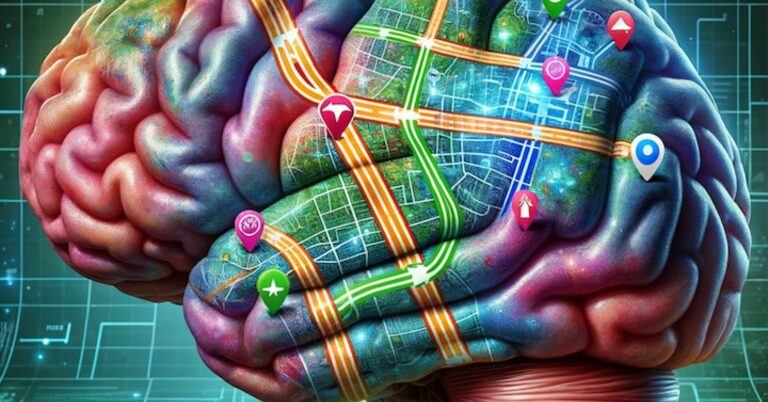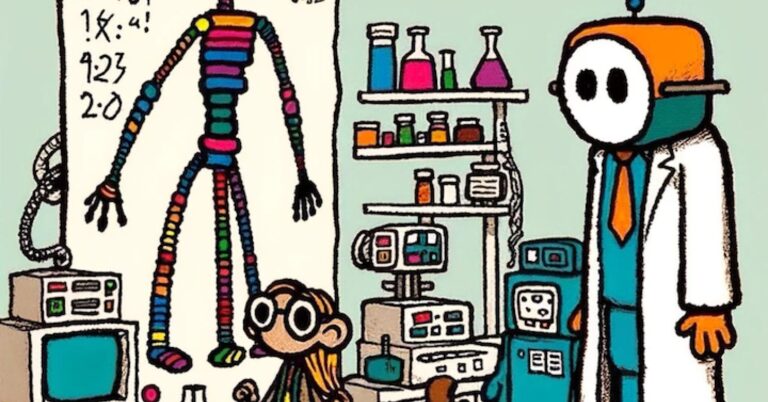
Source: PIRO / Pixabay
Are we living in a flatland? Or perhaps, are we bound in a cube of perception with impermeable spatial walls of length, width, and height—like a mime stuck in an imaginary cube? Let’s take it slowly and start with two spatial dimensions.
Flatland, Edwin A. Abbott’s thought-provoking 1884 novella, set the stage with its two-dimensional world populated by geometric shapes, fundamentally incapable of perceiving the depth of a third dimension. The sphere’s entry into this flat universe is nothing less than revelatory, challenging the very fabric of their reality.
As we push the boundaries of technology, it’s worth pondering: Are we the modern-day Flatlanders, bounded by the cognitive limitations of our myopic perceptions and our cognitive processing itself? The question is simple, and the implications are profound. Is our human perception a critical framework for navigating reality or a yoke that leads us on a limited and restricted path?
The Human Flatland: Stuck in a Box
In Flatland, shapes are restricted by the dimensions they can perceive. They have length and width but no height, rendering a sphere incomprehensible in its true form.
Similarly, humans have long been bounded by cognitive and perceptual limitations, effectively confining us to our version of Flatland. These limitations aren’t just about physical senses but also extend to our cognitive faculties, inhibiting us from understanding higher-order complexities naturally.
AI and LLMs: Thinking Out of the Sphere
In our attempts to grapple with an increasingly complex world, envisioning a five-dimensional hypercube might be an interesting conceptual step forward. However, the concept of a hypercube is not confined merely to five dimensions; it generalizes elegantly into many or “n” dimensions.
This offers a metaphorical framework for understanding many interlocking systems and phenomena that a Flatland sphere, or our conventional three-dimensional thinking, can’t capture.
Artificial intelligence (AI) provides the cognitive scaffolding to approach these n-dimensional challenges. Each additional dimension in a hypercube can be considered, adding another layer of complexity or another variable to the equation.
In an n-dimensional hypercube, we’re not just dealing with length, width, height, and time but many other dimensions that may correspond to variables as diverse as social factors, economic conditions, or quantum states.
Large language models (LLMs) have the computational horsepower to parse these n-dimensional “hypercube” complexities, converting abstract mathematical concepts into tangible and comprehensible articulations. For instance, if a five-dimensional hypercube can help us understand how a single event can have ramifications in multiple “directions” simultaneously, an n-dimensional hypercube could potentially capture the web of causality in complex systems like climate, financial markets, or human cognition.
This n-dimensional hypercube perspective allows us to see problems and solutions in a new light and to fundamentally reframe the questions we ask and the methods we use for problem-solving. While the human mind may struggle to comprehend this multidimensional space intuitively, our advanced computing tools can easily navigate it, offering us previously unattainable insights.
Further, the concept of an n-dimensional hypercube is not just a mathematical abstraction but a symbolic representation of the multi-faceted, interconnected challenges and opportunities that lie ahead. Our partnership with advanced computing enables us to delve into these complexities, expanding our cognitive and perceptual horizons far beyond the confines of our traditional “flatland.” With each added dimension, we move closer to understanding the vast and intricate tapestry of what could very well be defined as a “SuperReality.”
The Intersection of Perception and Cognition
In Flatland, perception is a function of biological limitation and cognitive readiness. The shapes could understand the third dimension conceptually before they could perceive it.
Similarly, our interaction with advanced computing technologies expands our cognitive realm, preparing us for a broader perceptual shift. Our growing ability to understand higher dimensions conceptually will, in turn, inform and expand our perceptual capacities. This interplay between perception and cognition is where the magic happens.
Navigating the Unfathomable: The SuperReality
In this evolving landscape, the term “hyperreal” no longer captures the profundity of our expanding perceptual terrain. What we once dismissed as synthetic or contrived—the products of AI and advanced computing—now beckons us to the forefront of a SuperReality.
This isn’t a distorted or exaggerated vision of the world; it is an enriched, multidimensional space that transcends our biological and cognitive limitations. Just as the sphere in Flatland was not an aberration but an invitation to transcend the plane, our emerging technologies offer us a gateway to a richer, more complex understanding of existence.
Far from leading us into a maze of artificiality, the new dimensions opened by AI guide us toward a more encompassing, nuanced, and extraordinarily real SuperReality.




















+ There are no comments
Add yours